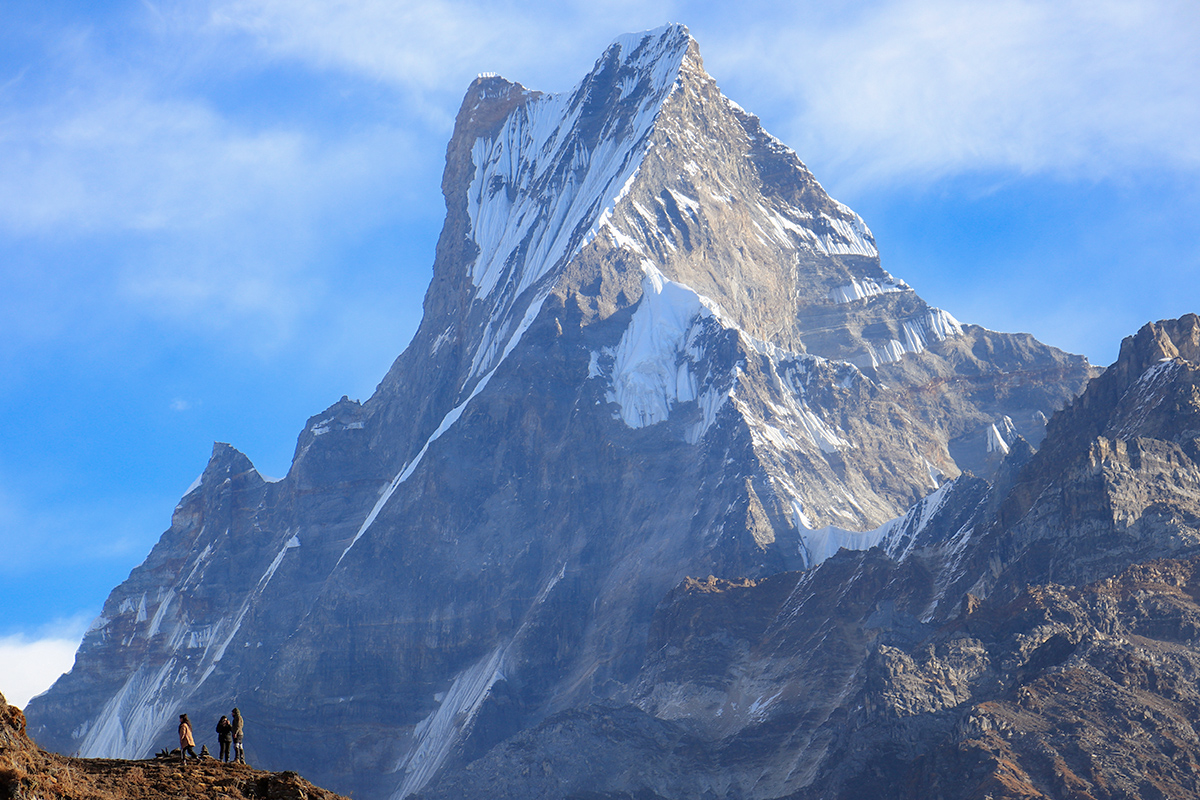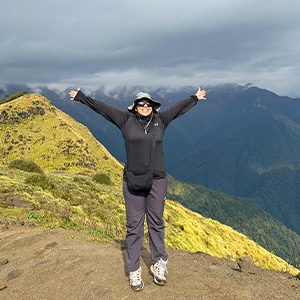Introduction of Mardi Himal Trek
The 4500-meter-high Mardi Himal Trekking is one of the new locations in the Annapurna region that debuted after 2012. In comparison to the Annapurna Circuit and Annapurna Base Camp, as well as other routes such as the Poon Hill Trek, the Manaslu Trek, and the Everest Base Camp Trek, there are not as many people trekking on this route as it is relatively new. It takes roughly three to four hours to go to the base camp of the Mardi Himal from the high camp, which is located at 3,700 meters. The Mardi Himal trek is the best option for hikers who have a limited amount of time but do not want to skip out on the trekking experience that Nepal has to offer. A short trip of only four days will take you to one of the most breathtaking viewpoints in all of the Himalayas of the Annapurna Region. The Mardi Himal hike, which is said to be easy to moderate in difficulty, is good for both new trekkers and experienced mountain climbers.
The Mardi Himal trek is an amazing adventure that gives you a beautiful view of several mountain ranges, like the Machhapuchhre, Hiunchuli, Annapurnas, and Lamjung Himal. Trekking in the Mardi Himal region is not restricted to the mountains alone; instead, the trails take hikers through scenic settlements where they can interact with natives and gain insight into how they live their lives, which is strikingly distinct from that of people living in the modern world. Visitors are given a warm welcome by the locals, who treat them as if they were part of their own family with their warm hospitality and positive attitudes.

Highlights of Mardi Himal Trek
- Trekking through the vibrant and less crowded trail offers majestic views of valleys, forests, mountains, and so on.
- You will get a chance to experience stunning mountains like the Annapurna range, Dhaulagiri, Hiunchuli, Fishtail, and many more snowy peaks.
- Trekking through the traditional mountain village, lush green jungle, and authentic natural beauty
- Explore the local culture, traditional villages, and warm hospitality from the local people.
- Experience sunset and sunrise from the Mardi High Camp above snowy peaks.
- You will get a chance to see the Pokhara Valley from the Mardi Viewpoint.
- Explore Pokhara and the lakeside after trekking.
How long is the Mardi Himal Trek?
This amazing hike usually takes a total of eight days to complete and is about 25 miles (41 kilometers) long. The length of time it takes, the number of rest days taken, and the distance covered all depend on the fitness level of the hiker. The second day of your hike will begin at Phedi, where you will make your way to Pothana Village. On the fifth day, you'll reach your final destination, which has the highest point of 4,250 meters above sea level. On day 6, you will descend using the same path that you took the previous day. On the eighth day of your trip, you will typically be able to drive back from Siding Village and continue on to Kathmandu via Pokhara.
Normal Itinerary for the Mardi Himal Trek
- Day 1: Arrival in Kathmandu City
- Day 2: UNESCO World Heritage Site Excursion in Kathmandu
- Day 3: Drive from Kathmandu to Pokhara
- Day 4: Drive from Pokhara to Kande and trek to Pitam Deurali
- Day 5: Trek to Rest Camp
- Day 6: Trek to Mardi High Camp
- Day 7: Hike to Mardi Viewpoint, explore base camp, back to low camp
- Day 8: Trek to Siding Village and Drive to Pokhara
- Day 9: Drive or fly back to Kathmandu
- Day 10: Departure Day
Is Mardi Himal Trek difficult?
The Mardi Himal Journey is not difficult because you will only be going through a jungle for one or two days during the trip. There is a chance that you will come across a leopard, a wild yak, or some other wild creature. Once you get to the base camp for Mardi Himal, you need to be careful about the avalanches. Since the route gets snowy and slippery from the viewpoint, the Mardi Base Camp's adjoining path is quite narrow and exceptionally difficult to follow in the winter.
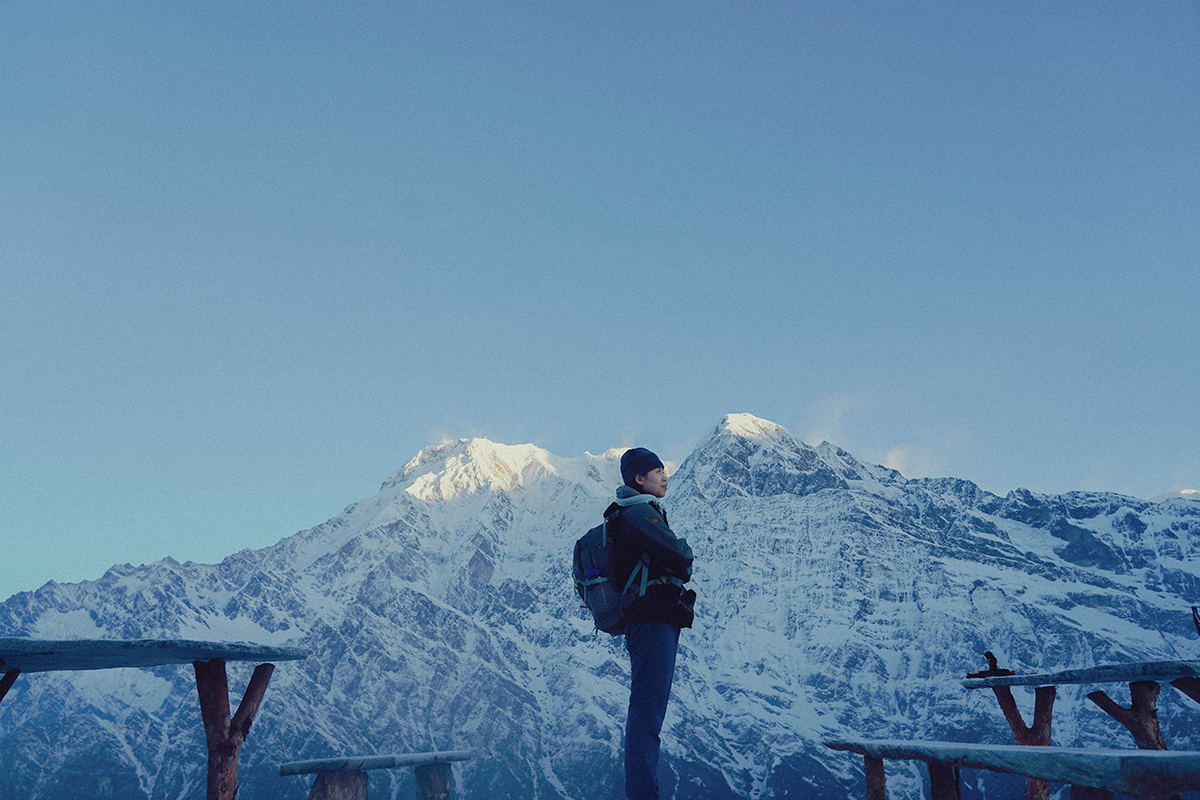
How much does it cost to go to the Mardi Himal Trek?
The expense of the trip is dependent on a variety of factors. The Mardi Himal Trek usually costs between $850 to $1500. This includes transportation, permits for the trek, full-board meals (breakfast, lunch, and dinner), an experienced guide, porters, lodging, and a certificate for the journey. If you travel together in groups and use our set departure times, you can get significant discounts.
If you're traveling alone or with a group, the Mardi Himal is quite expensive. As you will hear from the trip leaders and porters, traveling in a group can be more economical than going on a private trek, which is tailored to your specific needs. The Mardi Himal Trek is often one of the least expensive trekking routes in Nepal that is still worth doing.
Is the trek to Mardi Himal dangerous?
The highest point of the trek is almost 4,250 m, which is high enough for some people to get altitude sickness. Other than that, you don't need to be concerned about anything linked to altitude sickness if you are traveling with a guide. All you have to do is trek responsibly and have fun. In addition, the monsoon season's poor weather can make this walk extremely dangerous. To avoid wild snags, try to travel through the forested areas before dusk. Natural disasters like landslides, stones falling on certain portions, attacks by wild animals, and the possibility of becoming lost in the forest can make this walk risky. If you are traveling with a trekking group, on the other hand, they know these places well and will tell you to be more careful there. You'll only be in danger if you ignore your guide's instructions or venture out by yourself.
What is the best season/time for Mardi Himal Trek?
The Mardi Himal trek is doable throughout the year, but the ideal months to travel are September, October, and November. Nepal's post-monsoon autumn season includes all three of these months. This season is known for its beautiful blue skies, amazing mountain views, and green surroundings. If you can't finish your adventure in these three months, you still have spring (March, April, and May). Autumn and spring are the best times to hike in Mardi Himal because you can see the Annapurnas and rhododendrons in bloom.

How cold is the Mardi Himal Trek?
Even though the Mardi Himal Trek is not considered to be a very chilly route, December and January are indeed considered to be cold months for trekking in this region. Although the weather will be warmer in other months, you will still have to deal with temperatures between -8 and -10. The average high temperature during the day is 20 degrees Celsius, while the average low temperature during the night is between -4 and -5 degrees Celsius.
What kind of accommodations are available during the Mardi Himal Trek?
The Mardi Base Camp Trek's accommodations are simple lodges and tea houses. They can charge around $2–3 for wifi and electricity usage, respectively. Even though the lodges and tea houses are made of wood and stones from the area and don't have bathrooms inside, the design is unique and striking. The tea houses and hotels provide the trekkers with food, water, showers, and charging outlets for their cameras and smartphones. There are fundamental comforts, like a mattress, pillows, and blankets. But there aren't many of these during the busy season, especially if you're traveling by yourself, so you should bring a sleeping bag. However, as there will be fewer trekkers if the trekkers choose the off-season for the Mardi Himal Trek, they will have enough blankets, pillows, and mattresses. The twin beds in the rooms allow you to share them with a buddy. You will only get attached bathrooms in Pitam Deurali and Siding Village; other than that, it is difficult to get a single room or attached bathrooms. Some rooms at lower altitudes have bathrooms right next to them to make trekkers as comfortable as possible. The personnel at the tea houses are quite kind and extend a warm welcome to the trekkers.
What is the highest elevation you will reach during the Mardi Himal Trek?
The most common place to start the Mardi Himal trek is at Kande, which is 1,275 meters above sea level. After a few days of walking, you will reach the Mardi Himal View Point. The highest point you can possibly reach is Mardi Himal Base Camp, which is at 4500 meters. However, it is dangerous when there is ice or snow; thus, most hikers climb to Mardi Himal Viewpoint, which is at 4250 meters.
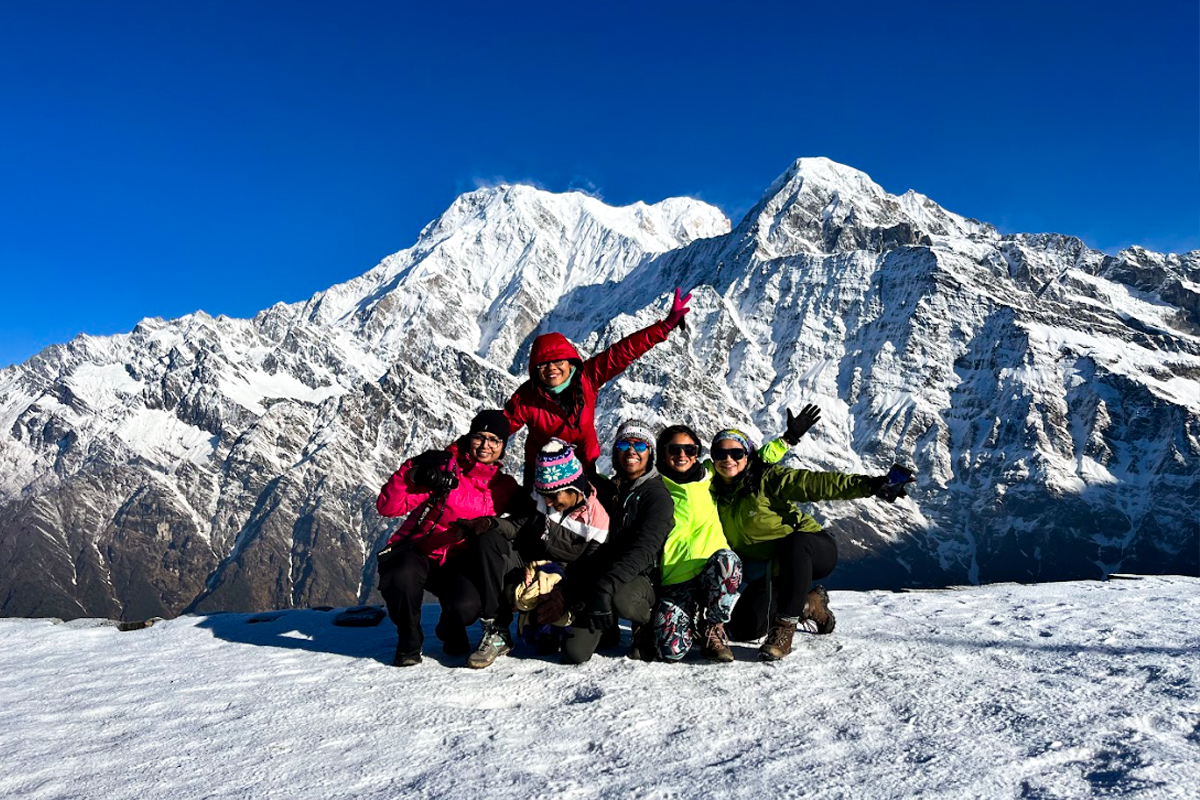
What are the food and water facilities in Mardi Himal Trek?
You might anticipate a wide range of dinners on the Mardi Himal Trek, from typical Nepalese fare to cosmopolitan cuisine. The tea houses where you'll be staying up until then will set you up with a menu and dish arrangements. Additionally, if you have dietary restrictions, dishes will be prepared according to your requirements. For instance, everything will be prepared for your request if you are only allowed to have gluten-free dinners or if you wish to eat a vegan or vegetarian meal. However, you need to make an effort to inform your host of your preferences.
The trekking route has access to water. Mineral water can also be purchased nearby. We advise against buying water bottles, though, as they will litter the trail. Additionally, there are several taps along the path that you may use to fill your water bottle, decontaminate the water using a tablet, and then drink it. Therefore, we advise everyone to bring a water decontamination tablet with them.
Entrance and Permits for the Mardi Himal Trek
You need two different kinds of permits to complete the Mardi Himal Trek:
Trekkers Information Management System (TIMS)
The TIMS card for different Nationalities are:
| Nationalities | TIMS Card Fee |
| Nepali Citizen | Free |
| Indian Nationals | NPR 2000 |
| Other Nationalities | NPR 2000 |
ACAP (Annapurna Conservation Area Permit)
The Cost of ACAP for different Nationalities are:
| Nationalities | ACAP Fee |
| Nepali Citizen | Free |
| Indian Nationals | NPR 1000 |
| Other Nationalities | NPR 3000 |
What is the fitness level requirement for the Mardi Himal Trek?
Your trip will be a lot more enjoyable if you follow a solid fitness regimen in the weeks leading up to it. When compared to other treks in the Annapurna region, the Mardi Himal Trek is on par with the others. It doesn't require any prior hiking experience at all. We have seen people of all ages, including the young, overweight, and underweight, complete this trek, and they have all expressed great appreciation for the fact that it is a non-difficult trek that does not call for any technical equipment such as ropes, oxygen cylinders, crampons, or walking poles.
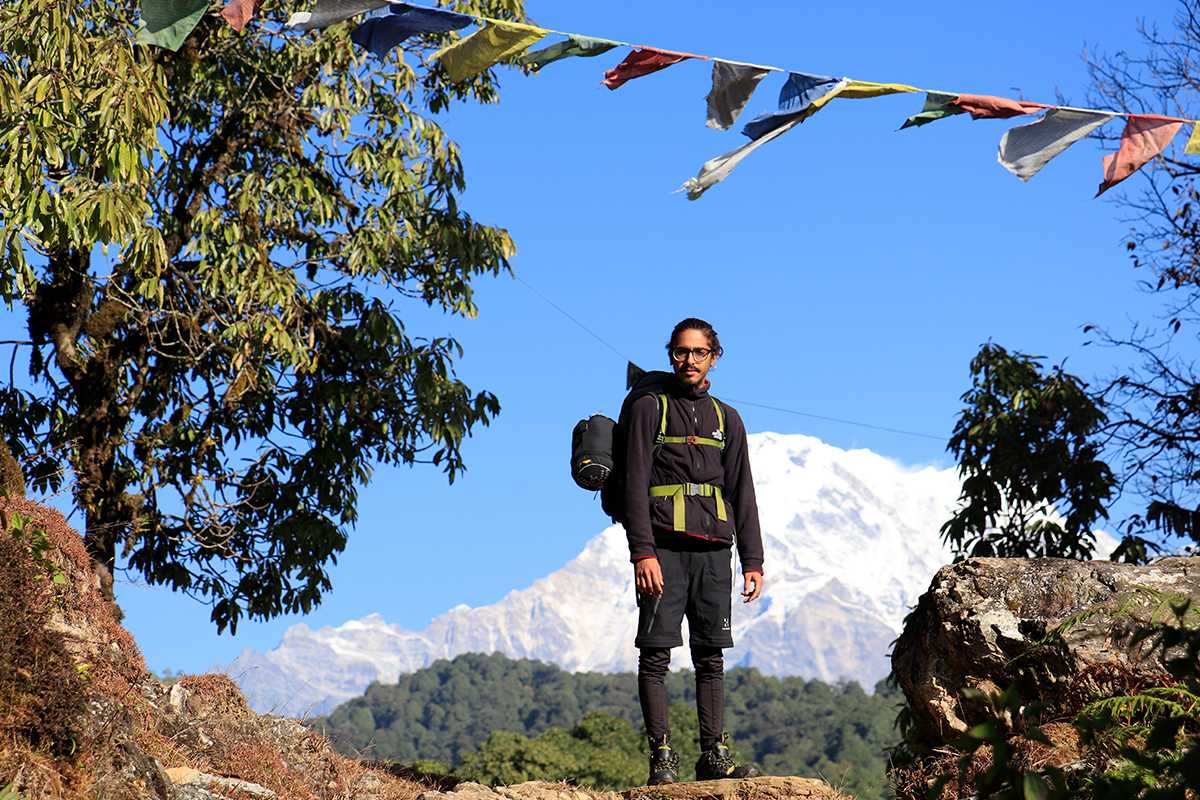
Travel Insurance for the Mardi Himal Trek
Travel insurance is required for all clients taking part in this Mardi Himal Trek. We strongly recommend that all of our clients purchase a comprehensive travel insurance package. For trekkers in the Annapurna region, the insurance must cover the cost of helicopter rescue, evacuation from high altitudes, and medical care. If it doesn't, they won't have enough protection in case they get hurt, get sick, or have to be sent back home. For reliable insurance that covers your travel in Nepal, check here
Is a solo trip possible on the Mardi Himal Trek?
Yes, you may complete the Mardi Himal Trek without a guide. You are free to attempt the trek on your own at any point during the year. However, bear in mind that guided treks are always preferable to solo treks. You will be responsible for overseeing every aspect of your solo trek. Your one choice will determine the course of the journey. Nobody will accompany you on the walk or provide you with any guidance. Additionally, you won't have anyone to call if you need help. If you are hurt, you must get up so that you may walk independently once more. You must navigate your way home if you get lost. You must never use "shortcuts" when trekking independently. Never deviate from the main trekking route. Additionally, there aren't many instances of theft and robbery when mountain trekking alone.
You must be concerned for your security. Additionally, be careful not to bring or wear expensive jewelry or accessories. However, we are always prepared to help you with our qualified and licensed guides if you decide to change your mind and opt to trek with a guide. Learn more about the comprehensive guidebook for solo female travel and trekking in Nepal.
What is the facility of internet, electricity, and mobile network?
Wi-Fi and electricity are available in the tea houses in the lower zones of the Mardi Himal Trail. The trekkers can recharge while maintaining an active social media presence. There may be an extra charge of up to $3 for Wi-Fi and charging stations at the tea houses. When compared to urban locations, the internet speed might not be the best. There is no electricity facility after Deurali; only solar energy is available, which can cost you around $3 to charge your phone, camera, or any other electronics. There will be a mobile network outage for two days when you are at a higher altitude since it will be difficult to access the mobile network, Wi-Fi, and electricity. We advise you to travel with backup power banks.
What to pack during your Mardi Himal trek?
As the Mardi Himal Trek is an easy-to-moderate trek in the Annapurna region, you should make sure that you do not bring an excessive amount of gear with you. This is especially important if you intend to complete the trek without the assistance of a porter or even on your own. Because you are going to spend every night in the tea house, you do not need nearly as many things as you might think. In terms of clothing, the standard recommendation is to bring two pairs each of the base layer, the second layer, and the outermost layer. For the comprehensive packing list for Mardi Himal Trek - click here
- A set of shorts and hiking pants
- Packable, lightweight polyester hiking tops
- You would benefit from having a waterproof shell jacket as well as a raincoat. Even in the typical trekking season, there's a chance of a sudden downpour occasionally
- Underwear and at least 4 different pairs of socks are required
- protective gear for the hands, head, neck, and mount to protect your face from the strong wind
- A good pair of hiking boots, a pair of sunglasses, a comfortable pair of sandals, a sturdy backpack, and any other regular medications you might need to bring with you
- Your everyday necessities, including a sleeping bag, toilet paper, a towel, sunscreen, toothpaste, and a toothbrush, as well as hand sanitizer
- If you want to drink regular water, you will find that a water bottle and a water purifier are the two things that are most helpful to have
Acute mountain sickness and preventive measures
The Mardi Himal trail does not have an especially difficult altitude gain or loss. The best piece of advice for preventing high altitude sickness is to avoid spending the night at an elevation that is more than 3500 meters higher than where you spent the night before. This can be done by avoiding spending the night at an elevation that is higher than the previous night. After hiking a distance of 1,000 meters, you should always take one day off to acclimate to the new altitude. This will help ensure your safety.
Some Common Symptoms of AMS
- Headache ( both sides and one side of the head)
- Loss of appetite
- Nausea and vomiting sometimes.
- Tiredness and dizziness.
- Feel discomfort while sleeping.
- Increase the heart rate and shortness of breath.
Common Prevention for AMS
- Keep your body hydrated and drink at least 4-5 liters of water every day when you cross above 3,000m
- Take plenty of rest after finishing your daily hike.
- Consume enough food and calories while trekking.
- Wear enough and make your body warm.
- When you feel most of the AMS symptoms, descend to a lower altitude as soon as possible.
- Ascend slowly and acclimatize properly according to the needs of your body.
- Travel with a local guide and travel agency so that they will help you to trail for all the possible consequences.
There aren't many drugs out there like Diamox that can help you avoid getting sick. However, one thing is important to keep in mind, and that is that before taking any drugs related to AMS, it is important to consult with relevant doctors or medical specialists. Learn more about, the comprehensive guidebook regarding acute mountain sickness and its presentation when you are thinking and trekking in the mountains of Nepal.
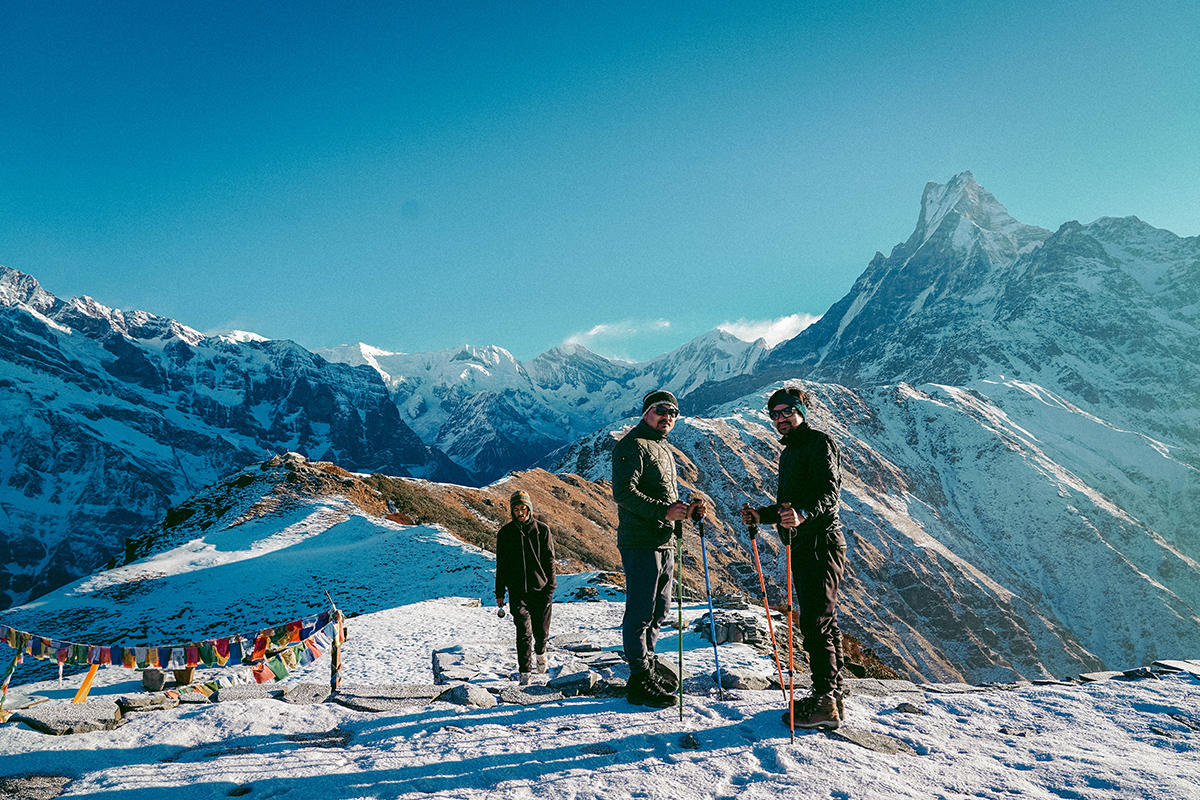
These are the most important questions to ask while organizing a trek in the Mardi Himal area of Nepal. During the trek, you will have the opportunity to see breathtaking snow-capped mountains, landscapes, valleys, and wildlife. This will make for an exciting and gratifying experience. It is also possible for you to combine this trek with other treks in the Annapurna region, such as the Annapurna Base Camp Trek or the Poonhill Trek, if you have the time to do so and if you would like to do so. In addition, if you are looking for further off-the-beaten-path treks in addition to the Mardi Himal trip, the Khopra Trek and the Nar Phu Valley Trek are both alternatives for you to consider. The Mardi Himal trekking trail is often popular in terms of Mardi Yoga Trek, Mardi Himal Retreat, and Mardi Himal Monsson Trek.
Please do not hesitate to reach out to us at any time if you have any questions about the Mardi Himal Trek. We hope that this guidebook will help you figure out the different parts of the Mardi Himal Trek and get you ready for one of the best trips of your life.
